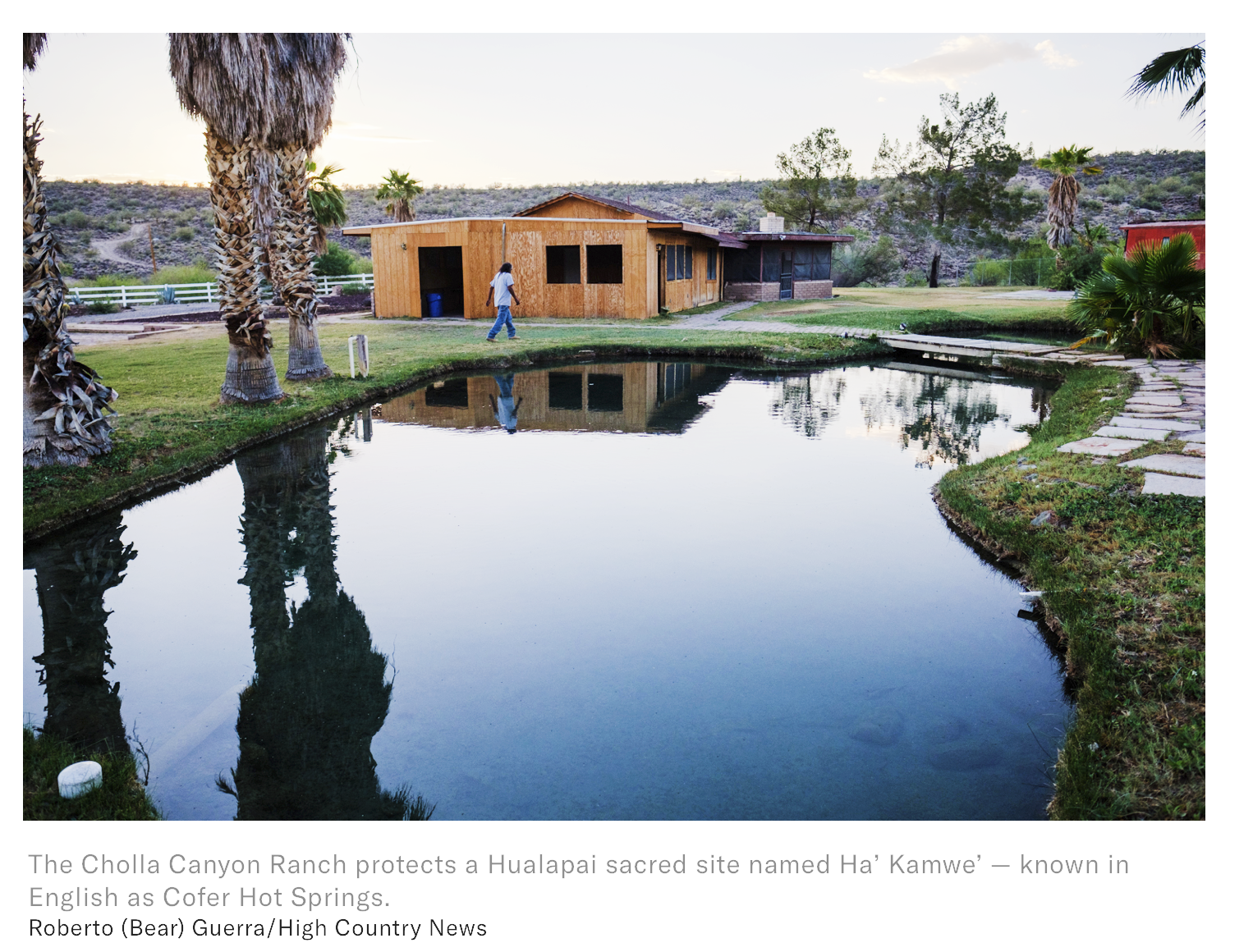In western Arizona, the push for EVs threatens the Hualapai Tribe’s religious practices.
By Maya L. Kapoor | High Country News
One autumn evening four years ago, Ivan Bender, a Hualapai man in his mid-50s, took a walk with his fluffy brown-and-white Pomeranian, Sierra Mae, to check on the ranchland he tends. Nestled in western Arizona’s Big Sandy River Valley, the ranch protects Ha’ Kamwe’ — hot springs that are sacred to the Hualapai and known today in English as Cofer Hot Springs. As the shadows lengthened, Bender saw something surprising — men working on a nearby hillside.
“I asked them what they were doing,” Bender recalled. “They told me they were drilling.” As it turns out, along with sacred places including the hot springs, ceremony sites and ancestral burials, the valley also holds an enormous lithium deposit. Now, exploratory work by Australian company Hawkstone Mining threatens those places, and with them, the religious practices of the Hualapai and other Indigenous nations. But this threat is nothing new: Centuries of land expropriation, combined with federal court rulings denying protection to sacred sites, have long devastated Indigenous religious freedom.
Cholla Canyon Ranch, where Bender is the caretaker, includes approximately 360 acres about halfway between Phoenix and Las Vegas, flanked to the west by the lush riparian corridor of Big Sandy River. The valley is part of an ancient salt route connecting tribes from as far north as central Utah to communities in Baja California and along the Pacific Coast, documented in the songs and oral traditions of many Indigenous nations.








